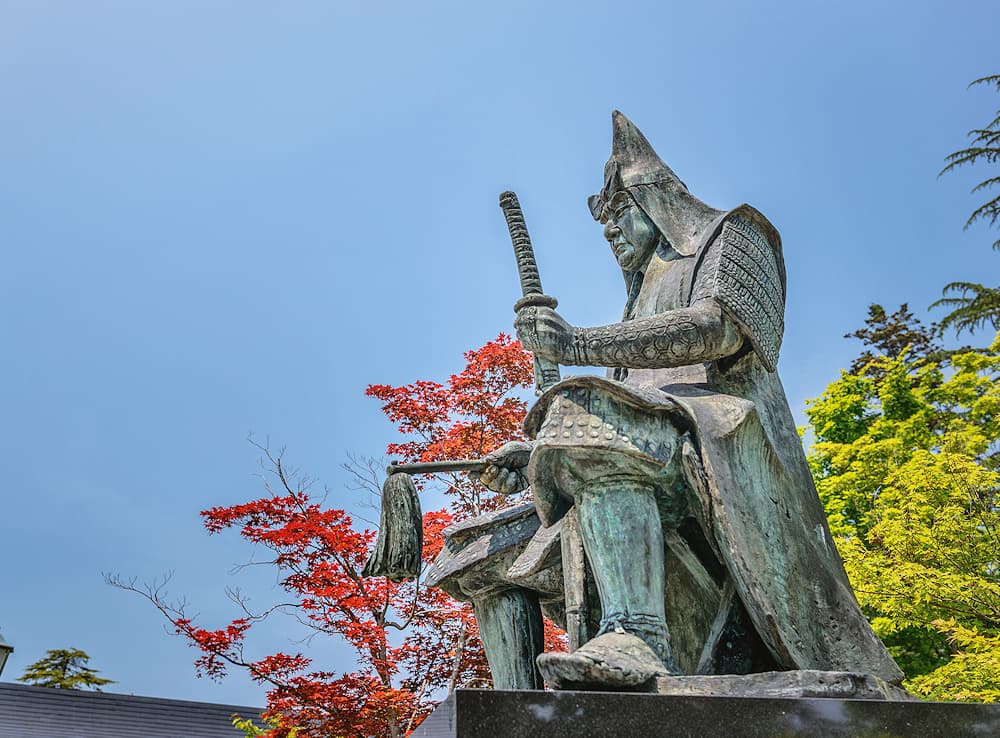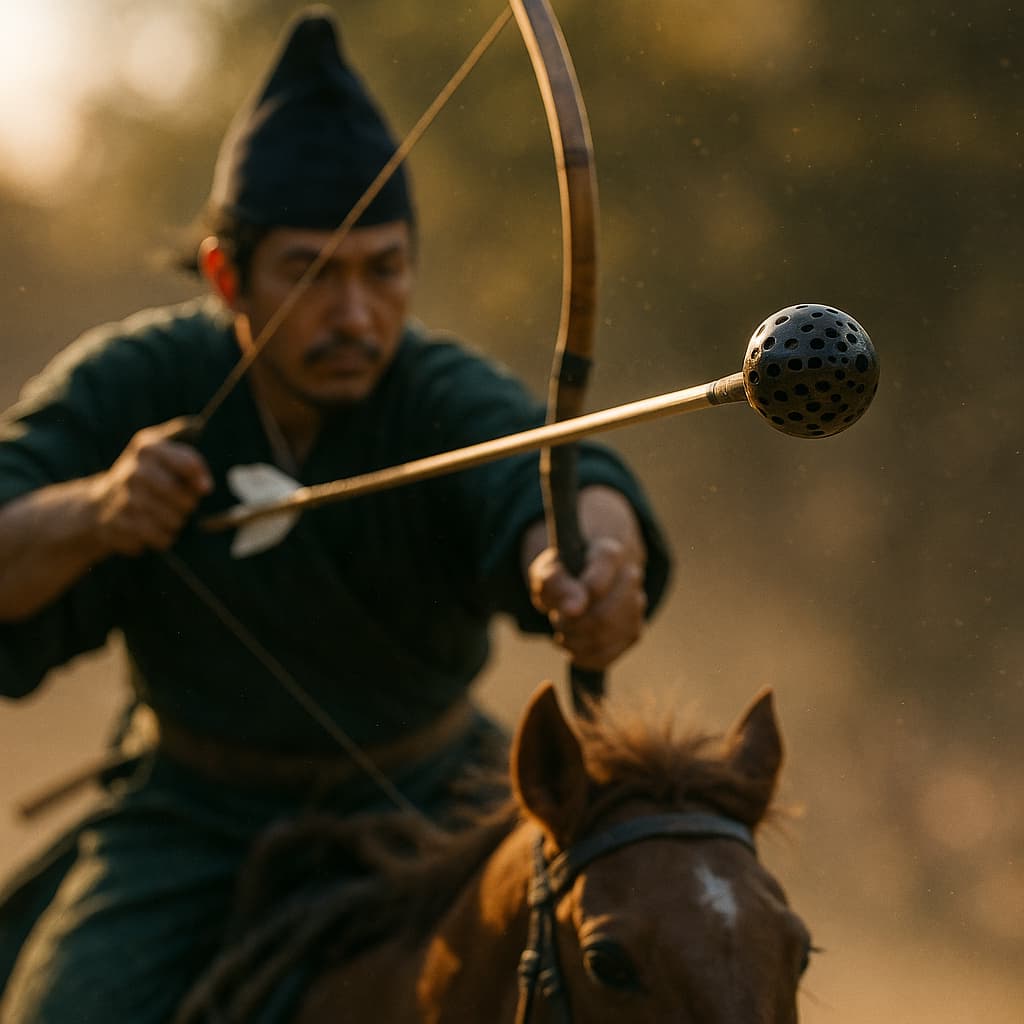. Wikipedia § Kabura-ya
. The Metropolitan Museum of Art(Whistling Arrow (Kaburaya))
. Royal Armouries(Whistling arrow (kabura ya))
. Kokugakuin University(Kurabeuma and yabusame...)
. Japan Past & Present(Archery in Early Modern Japan)
|

Welcome to our "Did you know?" section, where we invite you to delve into the fascinating world of katanas, Japanese swords and martial arts. Explore with us the secrets, anecdotes and interesting facts surrounding these iconic weapons and the traditions ...see more
Illustration: Statue of Kenshin Uesugi, Matsugasaki Park, Yonezawa, Japan

In Chinese mythology, the Tianlong or Tien-long ...read more
T10 steel is the most widely used carbon tool steel in China, with a toughness ...see more
The word "samurai" (侍) comes from the Japanese verb saburau (侍う) meaning "to serve" ...see more
The 7 virtues of Bushidō represent the samurai code of honor. This is the thinker ...see more
The largest Japanese sword is an ōdachi (long/great sword 大太刀 or nodachi, sword ... See more
Kusanagi-no-tsurugi (草薙の剣, the "Sword of Kusanagi") or simply Kusanagi ... See more

Did you know that during training, some samurai practiced two-handed swordplay to be ready for any eventuality? It was rare, but when you're a samurai, you're ready for anything, aren't you?
The idea of ambidextrous samurai refers to the ability of certain warriors to wield their katana (the long blade) and wakizashi (the shorter blade), or even two katanas, in each hand. The practice is particularly associated with Miyamoto Musashi (1584-1645), one of the most famous samurai, who developed the technique known as "Nitô Ryû" (or "two swords"). This required a great deal of discipline, since it was necessary to master the synchronization of movements and manage two blades at the same time, which is not at all easy.
In fact, we often speak of " dual wielding " or "the art of fighting with two swords" rather than pure ambidexterity. Not everyone was capable of this feat - far from it! Samurai who tried, either out of curiosity or to specialize, trained intensively, with precision and coordination exercises to be effective with both hands. Even if it was relatively rare (most preferring to concentrate on a single blade for greater power and finesse), the existence of this style testifies to the samurai's spirit of innovation and their willingness to prepare for all combat scenarios.
The katana was often considered the soul of the samurai. That's why the blacksmith, during the manufacturing process, was sometimes surrounded by sacred rituals: purification, prayers and meditation to infuse the blade with his "good vibe".
The sword wasn't just laid down any old how! In the Japanese home, the edge of the katana was placed upwards to limit wear and tear on the blade, and to signify peace (you don't draw just any old time).
The famous sageo knot, which holds the sword scabbard in place, could also be used to improvise a tourniquet or a rope in case of trouble. A simple cord can save the day!
Some katanas were tested on the corpses of criminals or convicts. This practice, known as tameshigiri, was used to assess the blade's cutting quality. Today, fortunately, we're happy with rice straw!
SharpKatana...see more
SharpKatana...see more
SharpKatana...see more
Secure payment: your choice


PayPalwith or without account (CB)

Scalapay: 3 times free of charge

Cheque or bank transfer (contact us)
Trust
. French company
. Integrated warehousing and logistics
. No customs duties
. Studio and engraving workshop
. Shipment within 48 working hours
. Delivery in mainland France and Europe (Euro zone: Germany, Austria, Belgium, Cyprus, Croatia, Spain, Estonia, Finland, Greece, Ireland, Italy, Latvia, Lithuania, Luxembourg, Malta, Netherlands, Portugal, Slovakia, Slovenia); D.O.M. / T.O.M.: on quotation. Please contact us for further information.
. 14-day right of withdrawal
Delivery

Your Colissimo tracking space allows you to track and manage the delivery of your parcels.
Useful links
Customer reviews
Terms & Conditions
Frequently asked questions (F.A.Q.)
Cancellation form
Personal data R.G.P.D.